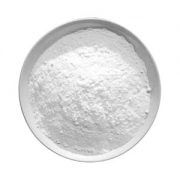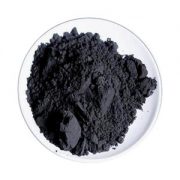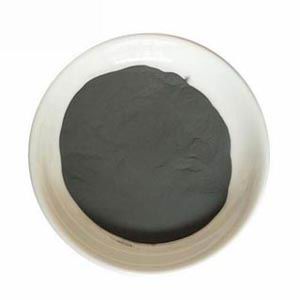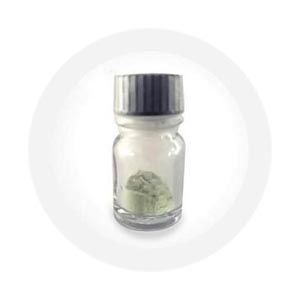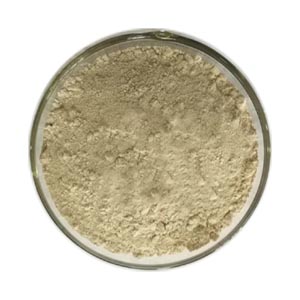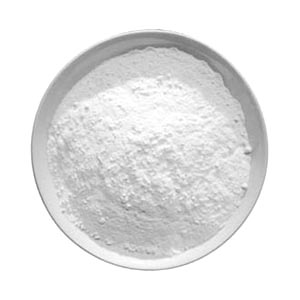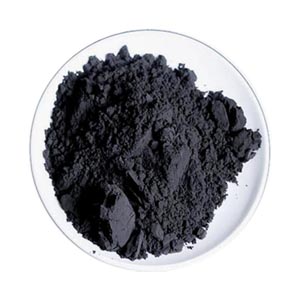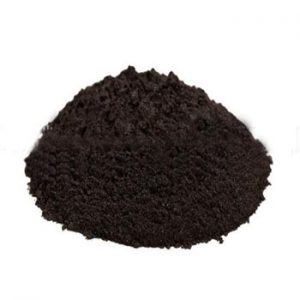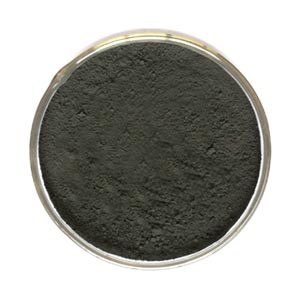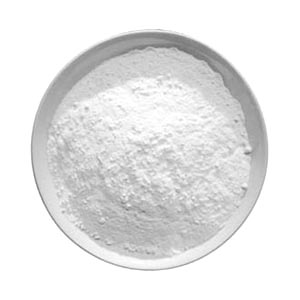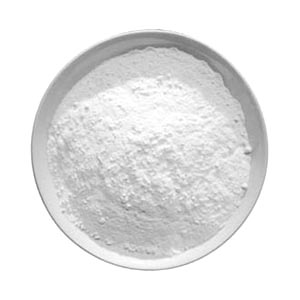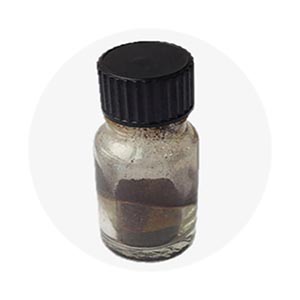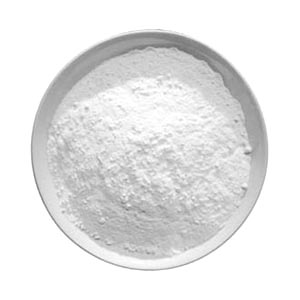
Digallium trioxide
Other name: GALLIUM SESQUIOXIDE;GALLIUM OXIDE;GALLIUM(III) OXIDE;GALLIUM(+3)OXIDE;digalliumtrioxide;Ga2-O3;Gallia
CAS number: 12024-21-4
EINECS No. 234-691-7
Molecular formula: Ga2O3
- 描述
- About Digallium trioxide
- Inquiry
Purity: 5N
Appearance : white crystalline powder
Particle size distribution: D10 = 1 μm; D50 = 5.2 μm; D90 = 11.5 μm
Molar mass : 187.444 g/mol
Crystal density: 5.88g / cm-3
Tap density: 0.59g / cm-3
Gallium content: Theoretical value 74.39%
Melting point :1725 °C, beta
Solubility in water : insoluble
Solubility : soluble in most acids
The alias for gallium oxide is gallium oxide, and gallium oxide (Ga2O3) is a wide-bandgap semiconductor with Eg = 4.9 eV, and its electrical and luminescent properties have long drawn attention. Ga2O3 is a kind of transparent oxide semiconductor material. It has broad application prospects in optoelectronic devices and is used as an insulating layer for Ga-based semiconductor materials and an ultraviolet filter. It can also be used as an O2 chemical detector
Isomers
Gallium oxide (III), ie gallium oxide, is the most stable of gallium oxide. In the air heated metal gallium oxidation, or at 200-250 ℃
Gallium hydroxide conversion and dehydration
Gallium hydroxide conversion and dehydration
Ga2O3 can be formed by calcining gallium nitrate, gallium hydroxide, and some gallium compounds.
Ga2O3 has five isomers: α, β, γ, δ, ε, of which the most stable is the β-isomer when heated to above 1000 ° C or hydrothermal conditions (ie wet) to 300 ° C Above, all other isomers are converted to β-isomers. Various pure isomers can be prepared by different methods.
The metal gallium in the air heated to 420 ~ 440 ℃; calcined nitrate decomposition or heating of gallium hydroxide to 500 ℃ and so can be prepared α-Ga2O3.
Rapid heating of the hydroxide gel to 400 ~ 500 ℃ can be worth γ-Ga2O3, γ-Ga2O3 spinel structure with defects.
Δ-Ga 2 O 3 is obtained by heating gallium nitrate at 250 ° C. and then dipping at about 200 ° C. for 12 hours, which is similar to the C-structure of In 2 O 3, Tl 2 O 3, Mn 2 O 3 and Ln 2 O 3.
Ε-Ga 2 O 3 was obtained by briefly heating (about 30 minutes) δ-Ga 2 O 3 at 550 ° C.
Nitrates, acetates, oxalates or other gallium compounds, as well as any other Ga2O3 isomers, can be decomposed or converted to β-Ga2O3 by heating above 1000 ° C.
Chemical properties
Ga2O3 can react with fluorine gas to form GaF3, and Ga2O3 is dissolved in 50% HF to obtain the product GaF3 · 3H2O. Ga2O3 can dissolve in the micro-hot dilute nitric acid, dilute hydrochloric acid and dilute sulfuric acid. After burning Ga2O3 insoluble in these acids even concentrated nitric acid, also not soluble in aqueous alkali solution, only by NaOH, KOH or KHSO4 and K2S2O7 together to melt it to dissolve. With twice as much NH4Cl melting at 250 ° C to form gallium chloride. Upon red hot, Ga2O3 reacts with quartz to form a glass body, but no new compounds are formed upon cooling. Red hot and can also react with the glazed porcelain crucible.
Ga2O3 reacts with many metal oxides under heated conditions. The crystal structure of the gallate M (I) GaO2 obtained by the alkali metal oxide reaction (higher than 400 ° C) has been determined. Like the Al2O3 and Ln2O3, it reacts with MgO, ZnO, CoO, NiO and CuO to form Spinel-type M (II) Ga2O4. The product M (III) GaO3 reacted with the trivalent metal oxide usually has a perovskite or garnet type structure (such as lanthanide gallate LnGaO3). And more complex ternary oxide. People have studied mixed oxides of gallium for lasers, phosphors, and light-emitting materials. It is believed that the luminescent properties of gallate are attributed to the vacancy of oxygen. Because of its interesting electromagnetic properties (ie piezoelectric and ferromagnetic), FeGaO3 has been widely studied for its synthesis, stability and crystal structure.
Ga2-xFexO3 (x≈1) belongs to orthorhombic crystal. The unit cell parameters are a = 8.75A, b = 9.40A, c = 5.07A, coordination number 8, melting temperature 1750 ℃, density 5.53g / cm3. The magnetic and crystal structures of NiO · Fe2-xGaxO3 have also been studied
preparation
1.To gallium trichloride GaCl3 hot water solution plus NaHCO 3 highly concentrated hot water, boil until all the gallium hydroxide precipitated so far. The precipitate is washed with hot water until no Cl-, calcined at 600 ° C to obtain β-Ga2O3. When NH4Cl remains, it reacts with Ga2O3 at 250 ° C to generate volatile GaCl3.
2.This is a high purity Ga2O3 system. Ga (NH4) 2 (GaSO4) 2 was crystallized repeatedly and dried at 105 ℃. Under the condition of excess oxygen, the Ga (NH4) 2SO4 was dissolved in 5% ~ 20% H2SO4 solution and ammonia water was added to the solution. 800 ℃ burning 2h, then the purity of 99.99% to 99.9999% of the product.
3.Weigh 1kg99.9999% of high-purity gallium into a three-necked flask, adding high-purity nitric acid, the gallium were dissolved, and then filtered, the filtrate into the three-necked flask, transferred to the electric furnace evaporation (in a fume hood ), Concentrated to near the crystallization, the solution was placed in a large evaporating dish and evaporated to dryness. The evaporated dry Ga (NO3) 3 was placed in a muffle furnace for ignition, the temperature was controlled at 550 ° C., and the mixture was burned for 5 hours. After cooling, the finished product was taken out to obtain 1.2 kg of high-purity gallium oxide
application
Used as a high-purity analytical reagent for semiconductor manufacturing in the electronics industry
Precautions
Safety instructions: S24 / 25: to prevent skin and eye contact;
Category: Toxic
Toxicity classification: low toxicity;
Acute toxicity: Oral - Mouse LD50: 10000 mg / kg; Abdominal - Mouse LD50: 5000 mg / kg;
Storage and transportation features: warehouse ventilation low temperature drying;
Extinguishing agent: dry powder, foam, sand, carbon dioxide, water mist;
Professional standards: STEL 3 mg / cubic meter;
Storage method: Store in a cool, dry warehouse
Handling and storage
Operational notes: Operators should be specially trained to strictly abide by the operating procedures. Operational disposal should be carried out in a place with partial ventilation or full ventilation. Avoid eye and skin contact and avoid breathing vapor. Away from the fire, heat, no smoking in the workplace. Use explosion-proof ventilation systems and equipment. For canned, should control the flow rate, and a grounding device to prevent the accumulation of static electricity. Avoid contact with banned substances such as oxidants. When handling to light light unloading to prevent damage to the packaging and containers. Empty containers may be harmful residues. Wash hands after use, prohibit eating in the workplace. Equipped with the appropriate variety and quantity of fire fighting equipment and emergency equipment leakage.
Storage Notes: Store in a cool, ventilated warehouse. The warehouse temperature should not exceed 37 ° C. Should be stored separately with oxidants, food chemicals, avoid mixing reservoir. Keep the container sealed. Keep away from fire and heat. Treasury must install lightning protection equipment. Exhaust system should be provided with a static grounding device. Using explosion-proof lighting, ventilation settings. Prohibit the use of spark-prone equipment and tools. Storage area should be equipped with emergency spill equipment and appropriate containment materials
相关产品
-
Digallium triselenide powder
English alias: Gallium (III) selenide; gallium selenide (2: 3)
CAS number: 12024-24-7
EINECS No. 234-693-8
Molecular formula: Ga2Se3
Molecular weight: 376.326
-
Dirhenium heptaoxide
Other name: Rhenium(VII) oxide; trioxo-(trioxorheniooxy)rhenium; trioxo(trioxorheniooxy)rhenium
CAS no. : 1314-68-7
EINECS no. : 215-241-9
Molecular formula: O7Re2
Molecular weight: 484.4098
Density: 6.103 g/mLat 25 ° C (lit.)
Melting point: 220 ° C (lit.)
Boiling point: 360 ° C (lit.)
Flash: 360 ° C
-
Lanthanum strontium gallium magnesium oxide
Lanthanum strontium gallium magnesium oxide (LSGM) is a ceramic electrolyte material with high ionic conductivity. LSGM is used as an electrolyte membrane to improve SOFC performance or reduce operating temperature. The ionic conductivity of LSGM is about twice that of yttrium-stabilized zirconia (YSZ-8). This LSGM powder is ideal for use in casting, ink formulation, pelletizing and other ceramic manufacturing processes.
-
Ammonium perrhenate
Purity: 4N, 5N
4N: NH4ReO4≥99.99% , Re ≥69.4%
Appearance : white flake crystal.
Application: rhenium compound standard sample; Rhenium addition; Production of rhenium metal products, rhenium alloy and rhenium compounds raw materials. -
Diindium triselenide
Other name: indium selenide ,Indium(III)selenide, indium selenide (2:3)
CAS no. : 12056-07-4
EINECS no. : 235-016-9
Formula: In2Se3
Molecular weight: 466.516
Density :5.80 g/cm³
-
Germanium telluride
Other name: Germanium(II) telluride
CAS no. : 12025-39-7
EINECS no. : 234-706-7
Molecular formula: GeTe
Molecular weight: 200.24
Density (g/mL,25℃) : 6.14
Melting point (oC) : 725 -
Rhenium dioxide ReO2
Specification: ReO2≥99.99%, Re≥85.33%
Impurity:<100ppm
Appearance: black gray particulate matter. -
Gallium trichloride GaCl3
Purity: 99.99%
Physical characteristics: Strong hydrolysis in water, produce smoke in moist air. Melting point: 77.9℃ Boiling point: 201.03℃ Density: 2.47g/cm³
Appearance: White crystal or powder. -
Tellurium tetrachloride
Other name: Tellurium(IV) chloride, tetrachloro-lambda~4~-tellane
CAS no. : 10026-07-0
EINECS no. : 233-055-6
Molecular formula: H6Cl4Te.
Molecular weight: 275.4596
Melting point : 224 ° c.
The boiling point: 380 ° c.
-
Rhenium trichloride
Rhenium trichloride ReCl3 Re≥35% Purity: 99%
Properties: Dark red or purple crystals. Melting point 727℃. Boiling point 800 ~ 850℃. 500℃ vacuum sublimation, vapor green. Soluble in water, acid, base, liquid ammonia and ethanol, slightly soluble in ether.

